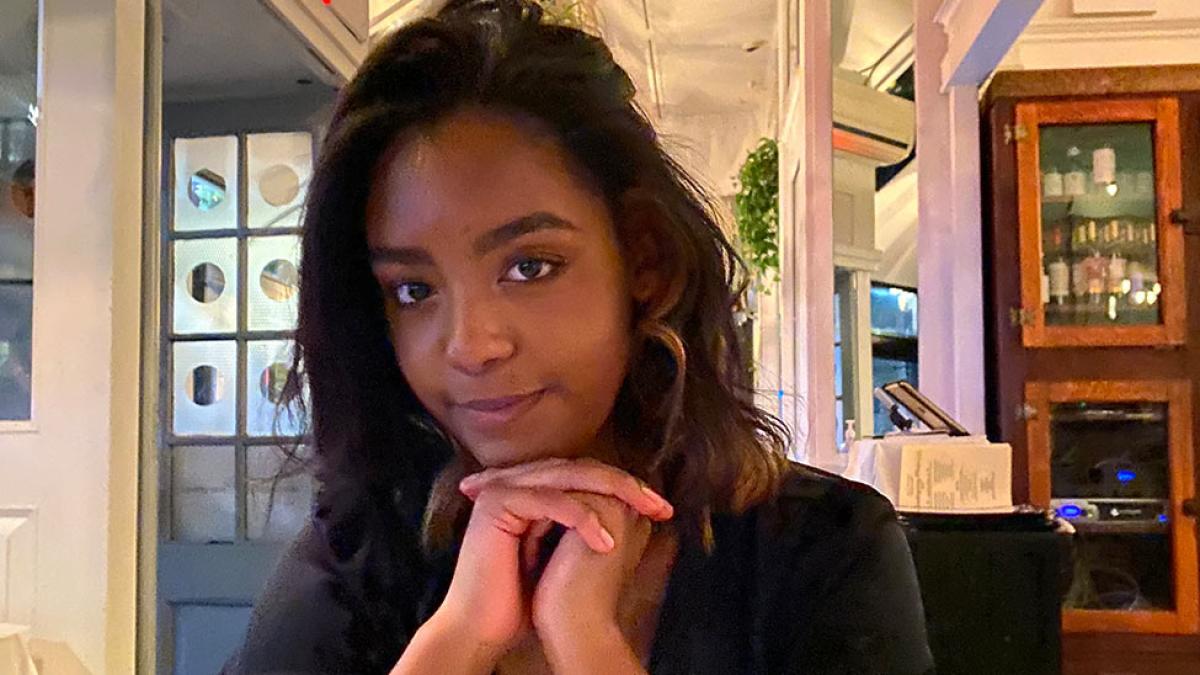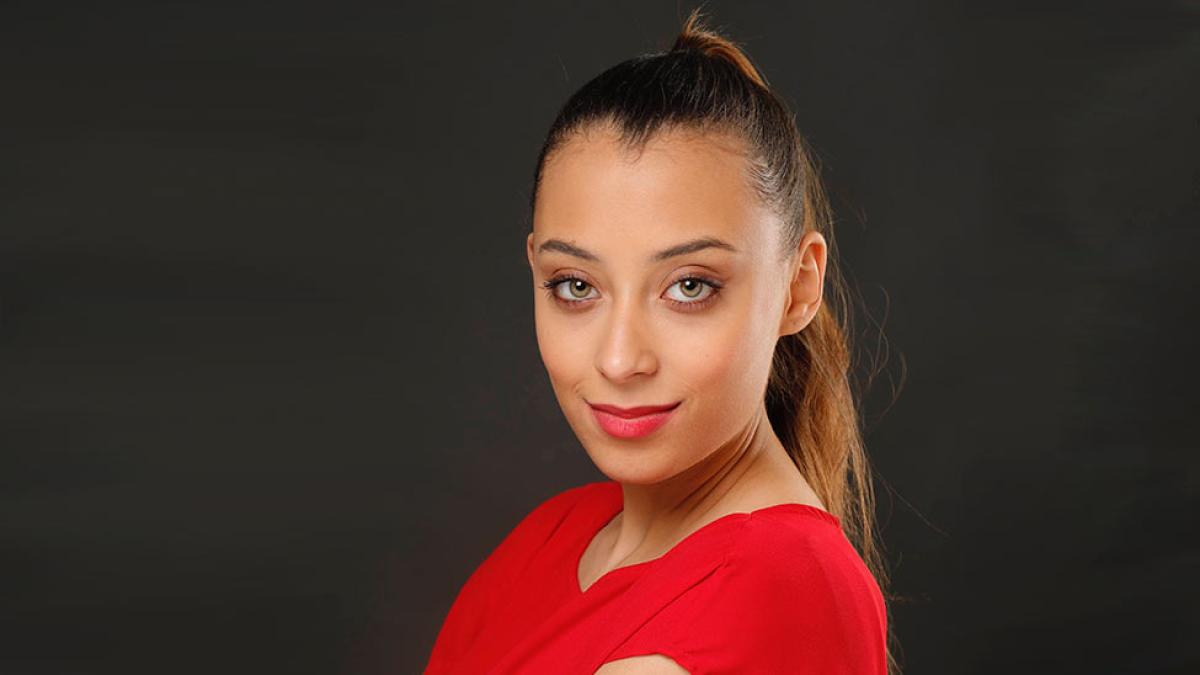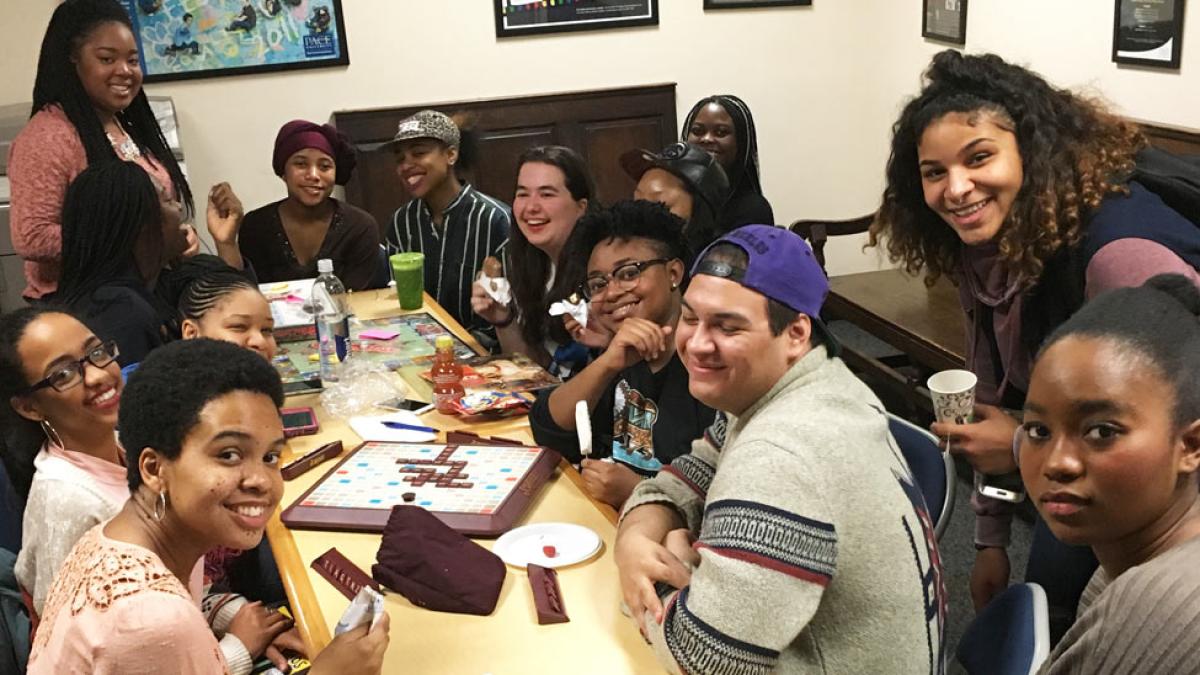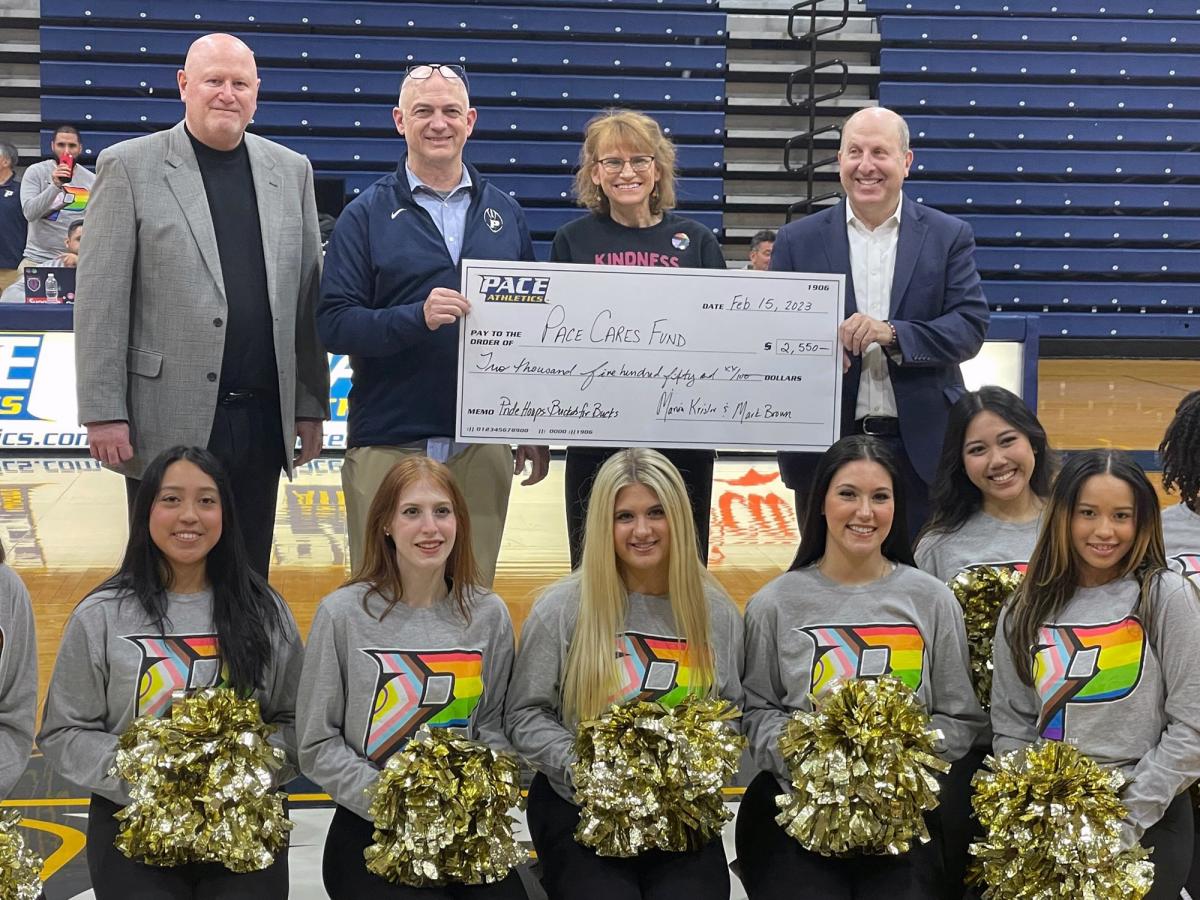
Playing Around with Winter Menus!
Pace Wellbeing Fair
Last week Pleasantville Farmers Market was present to support Pace University’s first Wellbeing Fair, meant to spread the word about the University’s wellness initiative to benefit students, faculty, and staff. Marvin Krislov, President of the university also signed the Okanagan Charter, an international charter for health promoting universities and colleges. It was great to celebrate among over 40 groups (including our Lead Sponsor Phelps Hospital) the ways we’re all seeking to contribute to various aspects of wellness in our local community.
Pace Holds Fair Focusing on Students’ Mental Health and Emotional Needs
Hundreds of Pace University students crowded into the Gottesman Room at the Kessel Student Center last week to sample lavender aromatherapy, taste stir-fried organic mushrooms or sign up for on-campus gardening. The event was the school’s inaugural Wellbeing Fair, held at all three Pace campuses to celebrate the adoption of the Okanagan Charter, an international framework for promoting wellness on college campuses globally.
'Clear' Conflict For Prosecutor-Lawmaker In 'Rust' Case
"Clearly, the [New Mexico] Constitution would seem to bar lawmakers from being prosecutors, and wearing simultaneous hats like this is a problem," said Bennett Gershman of Pace University, a former New York prosecutor and expert in prosecutor ethics.
New York Truck Attacker May Face Death Penalty Despite Biden Pledge
... and heart that the death penalty is an appropriate punishment," said Pace University law professor and former prosecutor Bennett Gershman.
Landfill Fight Tests New Yorkers' Right to a Healthy Environment
“They’re trying to pretend nothing happened,” said Nicholas Robinson, an environmental law professor at Pace University who is not involved in the case. “They feel they’re entitled to wait until the highest court in New York orders them to behave otherwise,” Robinson added. “Now, that’s kind of bad in the sense that they should want to support the bill of rights. But you can also understand that they want to be protected by a court order that tells them to do it.”
Pace University Pride Night Double Header
And on a positive note now, Pace University displayed a show of pride while hosting its annual LGBTQ pride hoops night. And this is aiming to encourage inclusion and awareness of LGBTQ participation in sports. Now in the past, the NHL teams have been criticized for backing off their pride nights like this one but tonight's event is a collaboration of Pace University's office of gender and sexuality and Pace Athletics. It featured a double header men's and women's basketball game versus Adelphi University. Athletes hit the court in Goldstein gym here in Pleasantville. This event featured a halftime drag performance by Ms Jade and how did the games end well homecourt took advantage. The Pace women won against the Adelphi 75 to 51 and the men's, Pace beat a Adelphi 77 to 72.
Pace University Hosts Annual LGBTQ Pride Basketball Event
Pace University displayed a show of pride while hosting its annual LGBTQ Pride Hoops Night. It aims to encourage inclusion and awareness of LGBTQ participation in sports.
Pace University Hosts “Pride Hoops Night” To Promote LGBTQA+ Inclusion in Sports
Pace University on Wednesday hosted its annual LGBTQA+ Pride Hoops Night, a collaboration between Pace University's Office of Gender & Sexuality and Pace Athletics. The tradition began in 2016, following the tragedy at the Pulse Nightclub in Orlando, Florida, to make a bold and positive statement to address hate and show that Pace is a welcoming and supportive institution to the LGBTQA+ community.
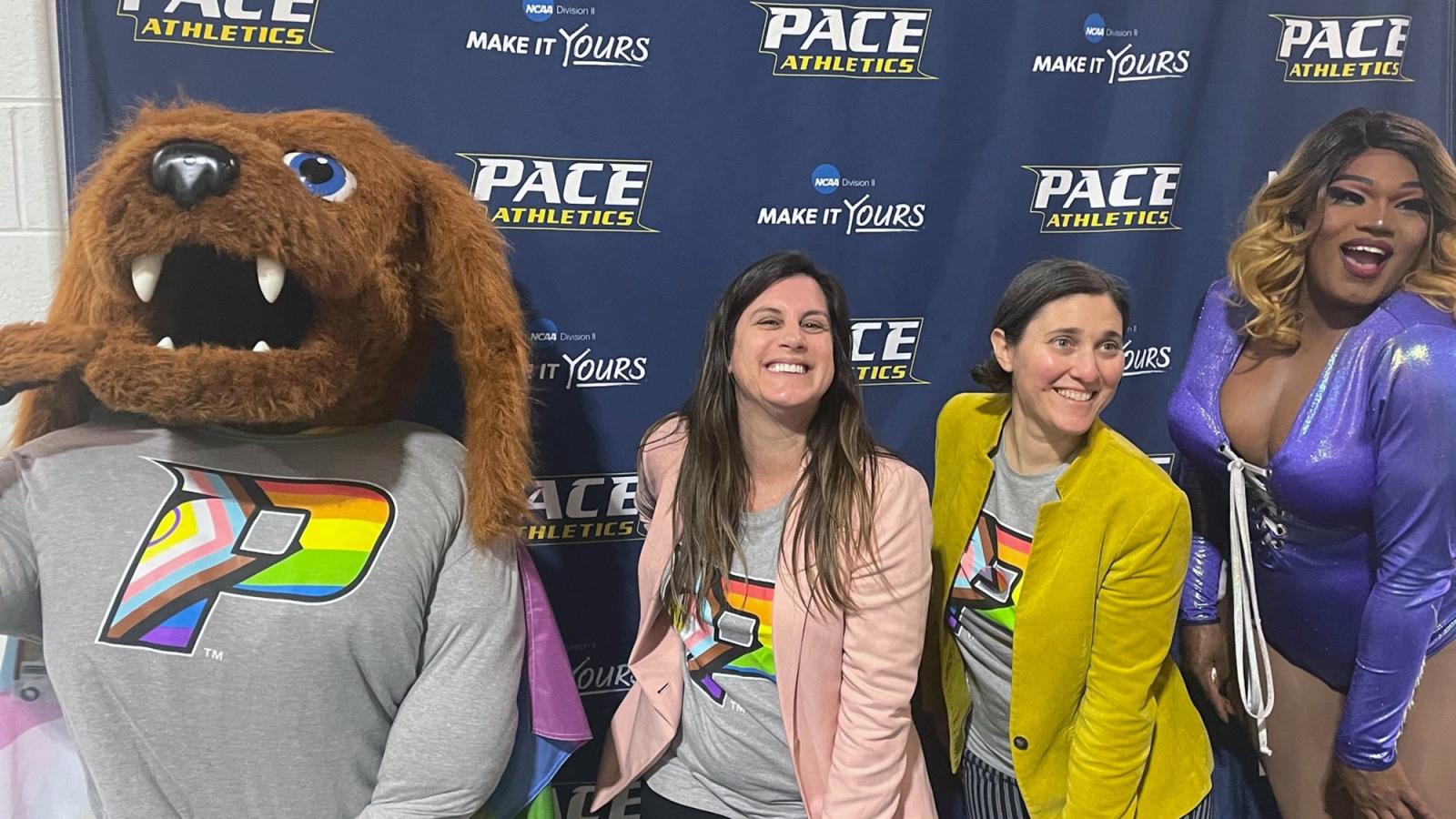
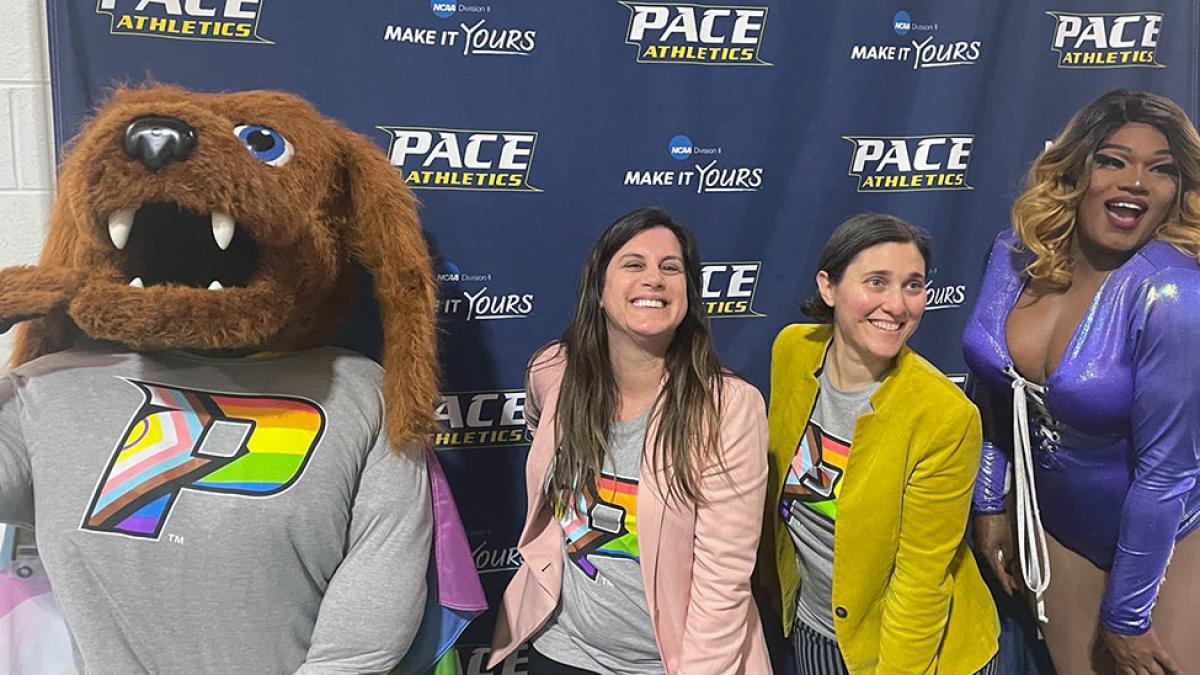
Over 300 Pace University Faculty, Staff, Students, and Community Partners in Attendance
Free throw Contest Raises $2,550 for Pace Cares Fund
Pace University on Wednesday hosted its annual LGBTQA+ Pride Hoops Night, a collaboration between Pace University's Office of Gender & Sexuality and Pace Athletics.
The tradition began in 2016, following the tragedy at the Pulse Nightclub in Orlando, Florida, to make a bold and positive statement to address hate and show that Pace is a welcoming and supportive institution to the LGBTQA+ community.
"I love that we have continued the tradition of Pride Hoops," said Rachel Simon, the Associate Director of the Office of Gender and Sexuality and LGBTQA+ Center. "It is a great opportunity for Athletics and the LGBTQA+ Center to partner and show the Pace community our shared values. It sends a great message of support both from the athletics department to queer identified community members and from the LGBTQA+ center to student-athletes."

The event featured a double-header of the men’s and women’s basketball game vs. Adelphi University. Halftime of each game featured drag performances by Miz Jade. Additionally, halftime of the women’s game featured a free throw contest between Pace University President Marvin Krislov and Pace head football coach Andy Rondeau. For every free throw made, Pace Director of Athletics Mark Brown donated to the Pace Cares Fund, which provides emergency financial relief to students who face unforeseeable economic hardships. President Krislov also donated to the fund; in all, the friendly competition raised $2,550. These needs range from housing, to travel, and to technology access to health and wellness.
“At Pace University, we value diversity, equity, and inclusion across our campuses,” said President Krislov. “Our annual Pride Hoops Night is a great way to celebrate the LGBTQA+ community in our community while showcasing our Setter Spirit. It was a wonderful evening all around.”
Community organizations that participated included the Westchester County Human Rights Commission, Hillels of Westchester, Planned Parenthood Hudson Peconic, LOFT LGBTQ+ Community Center, Westchester Medical Center Health Ally Care Center, Putnam Northern Westchester Women's Resource Center, and Westchester County LGBTQ+ Advisory Board.
In 2022, Pace University has been named as one of the 40 best colleges and universities across the country for LGBTQA+ students by Campus Pride, the preeminent resource for LGBTQA+ leadership development, inclusion, and advocacy within higher education. In addition, Pace University is among 40 four-year campuses from across the country that have achieved 5 out of 5 stars on the Campus Pride Index (CPI), the definitive national benchmarking tool measuring LGBTQ-friendly policies, programs, and practices.
About Pace University
Since 1906, Pace University has educated thinking professionals by providing high quality education for the professions on a firm base of liberal learning amid the advantages of the New York metropolitan area. A private university, Pace has campuses in New York City and Westchester County, New York, enrolling nearly 13,000 students in bachelor’s, master’s, and doctoral programs in its Dyson College of Arts and Sciences, Lubin School of Business, College of Health Professions, School of Education, the Elisabeth Haub School of Law, and Seidenberg School of Computer Science and Information Systems.
About Pace University Athletics
Pace University Athletics is a member of NCAA Division II, competing within the Northeast-10 Conference (NE10). Pace Athletics sponsors 15 intercollegiate sports, along with cheer and dance teams and a Pep Band. Known as the Setters, Pace’s official mascot is known as T-Bone. In 2021-22, Pace student-athletes posted a cumulative grade point average of 3.33. Additionally, a total of 562 Setters were selected to the NE10’s Academic Honor Roll with 69 student-athletes earning Academic Excellence with 4.0 semester GPAs. Twenty two student-athletes earned NE10 President’s Award for Academic Excellence, recognizing graduating student-athletes who have attained Magna Cum Laude at their institution, have participated in at least two seasons of NE10 competition and are current student-athletes at the time of graduation.
Q & A with Jon Ovadia '23
Jon Ovadia '23, English Language and Literature, embodies the notion of following your passions, embracing a love for creative writing that has led to publication in literary magazines and a prestigious internship with the National Book Foundation.
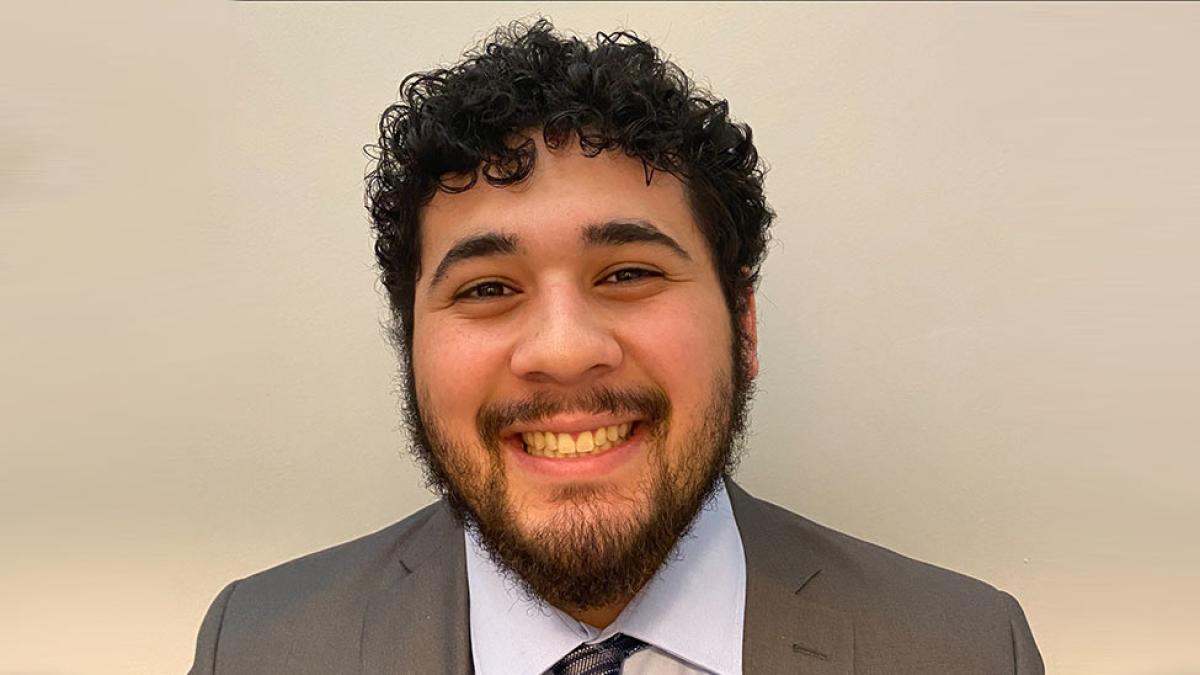
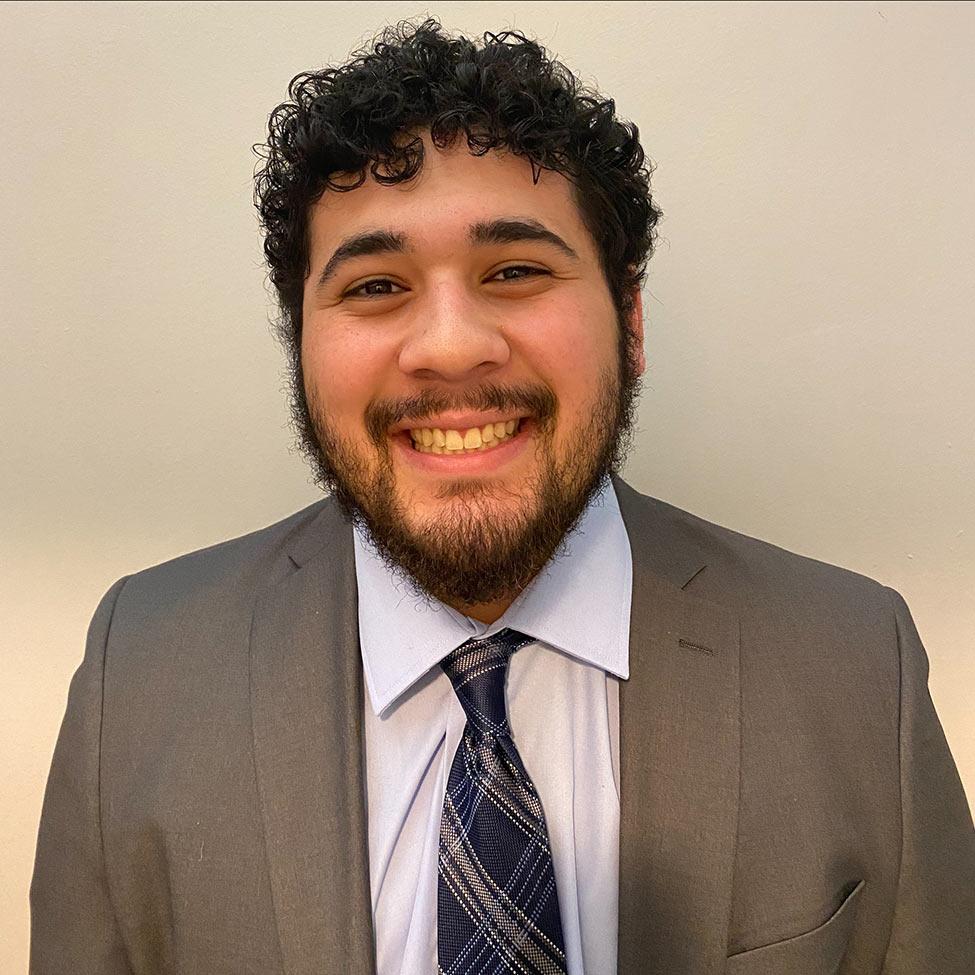
Jon Ovadia '23, English Language and Literature, embodies the notion of following your passions, embracing a love for creative writing that has led to publication in literary magazines and a prestigious internship with the National Book Foundation.
How did you become interested in pursuing a major in English Language and Literature with a concentration in Creative Writing?
I have always loved to write. As early as elementary school, I was crafting little stories in my notebooks, creating worlds with my imagination based on the books that I was reading. Initially, I came to Pace as an Arts and Entertainment Management major [from the Lubin School of Business], which is now my minor, but quickly found that not having creative writing in my daily schedule was a bummer, so I changed over to majoring in English Language and Literature with a Creative Writing concentration, and I have been incredibly happy ever since with that decision.
Why did you choose to attend Pace?
I grew up in suburban New York and always dreamed about moving to the city to pursue my music career and write someday. Pace provided me an opportunity to live out that dream, so four years later, here I am.
What have your experiences been like with the English Department? Have certain faculty members been instrumental in your academic journey?
Pace’s English Department has been instrumental in my academic and professional journey. I’ve had so many wonderful professors who have taught me valuable skills that have improved my writing, and thanks to them, I’ve even gained publication credit in a literary magazine. Professor Chris Campanioni’s recommendation that I submit my work to Across the Margin most recently paid off, as has another publication in You Might Need to Hear This. I’ve also had wonderful experiences with Professors Stephanie Hsu, Eve Becker, Beto O’Byrne, and Paul Levitz.
I’ve had so many wonderful professors who have taught me valuable skills that have improved my writing, and thanks to them, I’ve even gained publication credit in a literary magazine.
In the fall 2022 semester, you had an internship with the National Book Foundation, which administers the prestigious annual National Book Awards and produces programs that help connect readers to books.
What was your role and how has this internship been meaningful to you?
Interning with the National Book Foundation has been a wonderful experience. I specifically worked in their programs department, where I had the opportunity to conduct research for and assist in several important programs like Book Rich Environments, BookUp, and the Teen Press Conference, and I was often tasked with projects that spanned the entire foundation as well. And of course, I had the pleasure of working at the National Book Awards. It’s been such a joy getting to work in a fantastic environment surrounded by so many books. I’ve learned so much about the literary industry as well, which I believe will be a huge help for me in my career moving forward.
Have you had any other internships as a student?
I worked for a music software company called Quadio from my freshman to sophomore year as a Pace campus representative and was involved with the early stages of the platform, which was designed to connect musicians and music lovers in colleges all throughout the country.
What other activities and organizations have you been involved with as a student?
I’ve been a member of Pace’s radio station, WPUB, since my sophomore year. In the spring, I’ll also be assuming the role of the club’s secretary. WPUB is a wonderful club that gives students the opportunity to learn what working in a radio station could be like as well as allow them to create their own shows based on their music listening or other creative ideas.
What would you like to do upon graduation/what are your career goals?
I would love to work in publishing after graduation. My time with the National Book Foundation has taught me that I love working with books, and in some capacity, I would love to keep working in literary spaces that would allow me to write more of my own work while also being able to pay the bills.
What advice would you like to give to our current students?
Don’t worry if your plans change. I came to college with a very particular idea as to how my life was going to go, then realized I liked doing other things even more. Don’t be afraid to take classes that interest you if they don’t exactly fit into the plans you’ve made for yourself. Try new things and figure out what makes you tick.
More Student Stories
Nicolina Barone '24, English, Writing, and Cultural Studies, who published a book that was ranked among Amazon's Top 30 New Releases in Poetry, relishes the small liberal arts feel of Dyson, which has provided close connections with faculty and countless opportunities to get involved.
As a member of the pilot program for the Writing for Diversity and Equity in Theater and Media major, A'ishah Muhammad '25 is excited at how the program is continuing to grow, welcoming more voices and perspectives into their writers' room.
Brooke Lyn Sicignano '25 has been acting since she was six years old. Now, through the Acting—International Performance Ensemble program, she's developing collaborative skills, exercising creative abilities, and waking up each day excited to learn more.
Pace's Food Pantries
Community led food pantries have been supporting Pace Community members facing food insecurity for many years. See the options in Westchester and New York City.

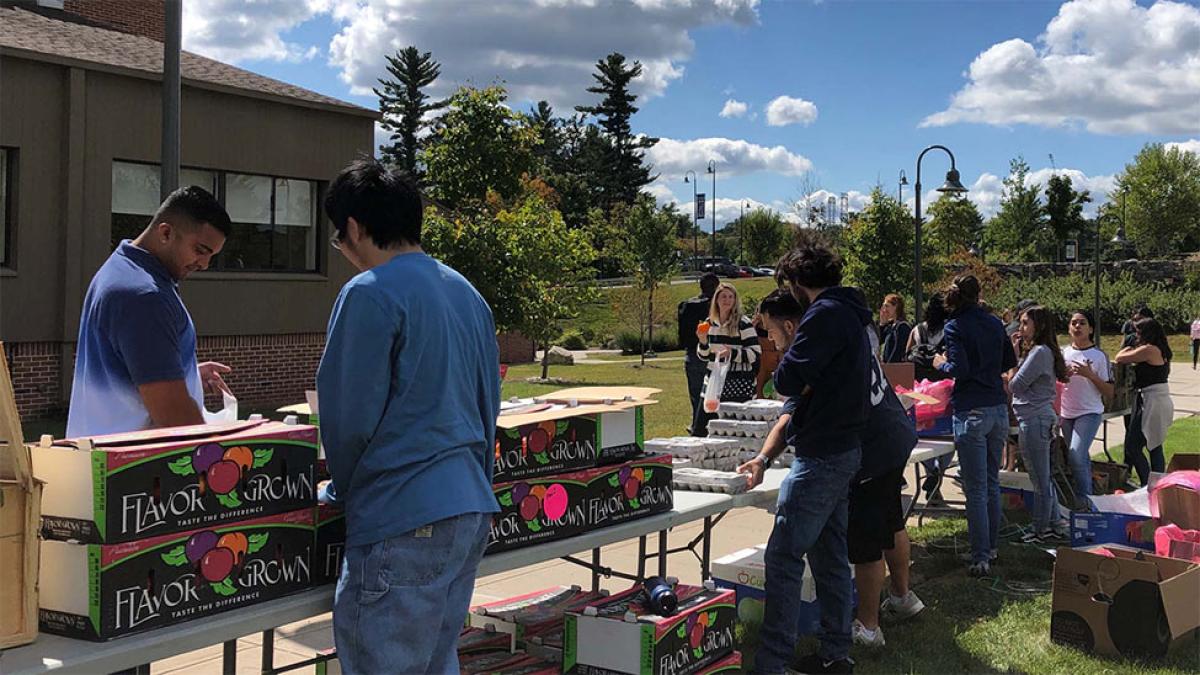
Fare Trade launched early in 2022, but food insecurity had not gone unnoticed or unaddressed at Pace before its formation. At both the New York City and Westchester campuses, community-led food pantries have been offering support for years.
On the New York City Campus, director of the Office of Multicultural Affairs Denise Santiago and a handful of student volunteers offer twice-monthly pick-ups of grocery boxes, containing up to two weeks of food. Provisions, a Bhandari Jain Family Food Pantry, opened in 2019, and today 250 guests utilize the pantry, many of whom belong to the Pace Active Retirement Community.
According to Santiago, the help Provisions offers has an impact on everyone involved. “It brings a lot of joy,” she says. “And then people send us these wonderful emails, really thanking us. We don’t do it for the thanks, but it just humbles you.”
The Pace Pleasantville Mobile Food Pantry has been feeding the Westchester community since 2018. The pantry itself is the product of an award-winning partnership with the nonprofit Feeding Westchester. Feeding Westchester covers food costs, and Pace staff and students volunteer their time to ensure that the 100 or so people who utilize the pantry once a month can have access to nutritious food.
“It’s not just about feeling good that we’re helping our community members, but also normalizing the conversation around food insecurity."
Heather Novak, director of the Center for Community Action and Research, took over as coordinator for the pantry this year. She is happy to see the community using the pantry, but what she really appreciates are the conversations happening about food insecurity. “We want to be able to look at it from a larger perspective,” she explains. “It’s not just about feeling good that we’re helping our community members, but also normalizing the conversation around food insecurity. So when someone says ‘it’s good we have so many people using the pantry’, the conversation doesn’t end there.”
Launched in Spring 2023, Pace University’s Office of Residential Life has partnered with Feeding Westchester, a nonprofit organization focused on addressing hunger and food insecurity in the local community, to install a permanent free food pantry on campus. Located in the lobby of Elm Hall, the Pace Market provides access to a variety of foods, dry goods, and prepackaged meals. This is in addition to the pre-existing Mobile Markets, which are held monthly.
Get involved through non-perishable food donations. Email Wen Xi in Westchester at wxi@pace.edu or Denise Santiago in NYC atdsantiago@pace.edu for details.
More from Pace
Across the country, nearly 40 percent of college students report going hungry, and 52 percent have utilized food pantry services at some point. At Pace, we’re working hard to help offset food insecurity on our campuses and we need your help to do it!
Through the U.N. Millennium Fellowship, three Pace students are innovating the way food insecurity is addressed on campus with the Fare Trade program.
Shades has been providing community and support to women and femmes of color through mentorships, outings, and discussion groups for over 15 years. Learn about its impact from coordinator Denise Santiago, PhD, and alumni facilitator Nina Riley '22.

